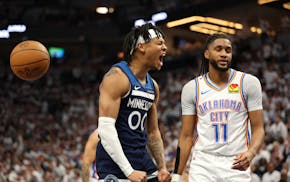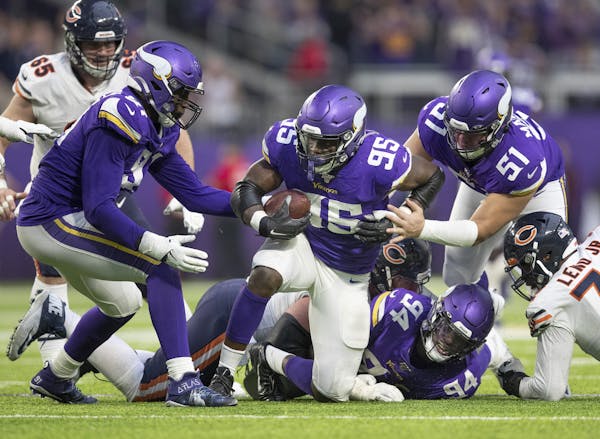A 100-year-old league birthed by a game in which humans gather in huddles and maul each other in front of 70,000 fans is about to kick off its second century with the mother of all social distancing experiments.
Meanwhile, a country in near universal lockdown because of the COVID-19 pandemic will tune in to ESPN, NFL Network or ABC on Thursday night as the NFL makes its annual three-day college draft the nation's first major sporting "event" in more than a month.
To say the logistics are complicated is a massive understatement. With team facilities shuttered and social distancing guidelines in place, roughly 180 remote video feeds from coast to coast must be coordinated through ESPN headquarters in Bristol, Conn., to pull off a joint production in which prospects will be picked, relief money raised via "Draft-A-Thon" and bored fans presumably entertained in a virtual return to normalcy.
"I just don't know what I can compare it to," said Seth Markman, ESPN vice president, production. "We do enjoy challenges. This is not one we wanted to have and hope to never have again. I feel really confident, but I will say it is damn complicated."
How complicated?
"There's nothing that even comes close," said Mark Quenzel, NFL Network senior vice president of programming and production.
Vegas stage to New York basement
Under normal circumstances, NFL Commissioner Roger Goodell would have strolled to a podium on some glitzy Las Vegas stage and officially welcomed Sin City into the NFL fiefdom at 7 p.m. Thursday. Thousands of fans, packed in tightly and filled with league-endorsed adult beverages, would no doubt have continued the tradition of booing Goodell right up to the moment he smothered the No. 1 overall pick with the night's first full-body bear hug.
Times have changed. At least temporarily.
Goodell will announce the picks from his basement in Westchester County, N.Y. All by himself. According to Peter O'Reilly, NFL executive vice president-club business and league events, a virtual montage of 15 fans of that team — presumably not booing — will be shown behind Goodell as he announces each pick.
At ESPN, the control room normally filled with 20 people will hold only seven, all wearing masks and spread at least 6 feet apart. Two people will be in studio for the ESPN/NFL Network broadcast while three will be in studio for ABC's telecast. Other on-air talent will be in their homes.
Elsewhere around the country, 58 prospects, every NFL head coach and every general manager have been given the necessary virtual equipment and instructions on how to set it up.
Lions General Manager Bob Quinn described his one-man "war room" thusly: "I'm staring at a TV to my right. I have three monitors to my left. I have two laptops. I have a huge what we call our draft phone. I have my home phone. I have two cellphones. And I have a printer."
'Mock draft' Monday
The Vikings have spent close to a month running virtual draft simulations with new equipment installed in the homes of the 20 or so people who normally would huddle together in the team's draft room. Monday, they'll get to see how their internal communication meshes with the league's overall operation when the NFL conducts a test run.
"Though the term 'mock draft' is being used, it's essentially a little less sexy than that," O'Reilly said. "It really is just a communication test where everybody will be in their position and our folks on the NFL player personnel side will make sure the communication is strong.
"And the exercise for how a trade will work — the communication between clubs and then with the league office — will also be tested. We will stress test all parts of that communication chain."
Each team will submit its picks to the NFL through an all-32-teams site. If something goes wrong there, the team can either call the league or announce the pick on a leaguewide conference call. In addition to those redundancies, each team also will have three people authorized to make a selection.
And, finally, if all heck breaks loose and a team's entire system crashes, "The NFL player personnel department would be in position to stop the clock" until things are fixed, said Brian McCarthy, NFL vice president of communications.
Cybersecurity and trades
Early this month, Ravens coach John Harbaugh voiced what a lot of NFL people were thinking when he said cybersecurity in a virtual draft is a "big concern." He was referring to teams trying to poach information from other teams (CyberGate?), but there's another concern the league is trying to downplay: Elite hackers targeting this billion-dollar behemoth by preying on its many techno neophytes.
The ability to make trades is another challenge teams are concerned about, especially in the later rounds. Teams have 10 minutes to make a pick in the first round, seven in the second, five in Rounds 3-6 and four in the seventh.
"The quick conversations back and forth that you have to have to make a trade will be more difficult based on the logistics," said Mark Dominik, SiriusXM radio analyst and former Buccaneers general manager. "I think the first round will be the normal amount of trades, but, yeah, [overall] I would say you're going to see [fewer] trades this year."
Dominik expects other fallouts from scouts being grounded, pro days canceled, player visits nixed and physicals left undone.
"The underclassmen who normally would have been [Day 3] picks, you're going to see fewer of them drafted," Dominik said. "I also think you're going to see general managers who really trust a certain area scout go back to that area more frequently.
"You'll see a higher number of guys from the Senior Bowl get drafted. … And you're going to see more guys trying out after the draft when teams are able to bring them in. We used to bring in 20 to 30 guys. You might see 40 to 50 for sure this year."
Setting the tone
As the first major league to resume in any fashion since the pandemic shut the sports world down, the NFL has two challenges this week, according to Quenzel, the NFL Network executive.
"First, to make sure all the technology works," he said. "It's clearly about drafting the players. But even more clearly, it's about setting the tone. That we understand that there's something much larger than us going on in the world. How to we set that tone Thursday night and then how do we maintain it through the three days of the draft."
Goodell was asked last week by NBC Sports why he insisted on going through with the draft during the pandemic.
"It's important to have normalcy," he said. "We're doing this in a way that I think demonstrates that you can continue to do what we need to do in this country and do it safely from home."

Learn a key difference between boys and girls lacrosse through two high school specialists
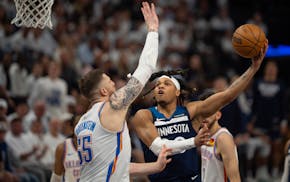
Timberwolves unveil X factor against Oklahoma City
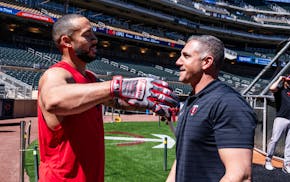
From Fort Myers to Minneapolis, Twins travel guy gets team to the ballpark on time
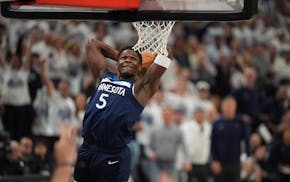
Timberwolves, to borrow a theme from their coach, hit a home run in Game 3 vs. Thunder
